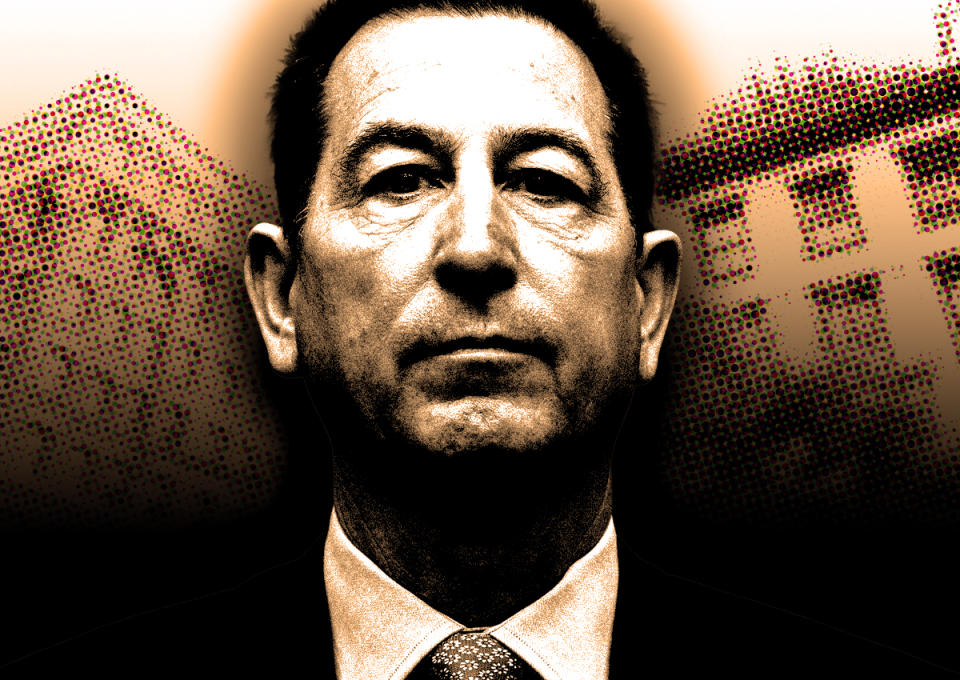
New York Community Bank, a key real estate lender trying to restore faith in its operation, reported its second straight quarterly loss.
Executives on a Thursday morning earnings call danced around solvency fears left over from a devastating first quarter and stressed efforts to boost liquidity and investor confidence.
The bank announced an hour before the call that it had sold its residential mortgage servicing business for $1.4 billion, adding to the capital from its $5.9 billion sale Monday of mortgage warehouse loans — lines of credit to other lenders — to JPMorgan Chase.
“We do find ourselves in a fairly strong liquidity position, which is nice to have,” said chief financial officer Craig Gifford.
Meanwhile, the bank said it had reviewed 80 percent of its multifamily portfolio, a source of investor anxiety given the series of blows to New York’s rent-stabilized sector.
“We have a lot more visibility,” Gifford said.
The picture, however, wasn’t pretty.
Multifamily delinquencies surged by 767 percent from the previous quarter. Charge-offs — debt written off as losses — grew by 590 percent. And non-accruals — loans on which borrowers are not paying interest — popped by 134 percent.
NYCB’s stock opened Thursday morning 17 percent below its Wednesday closing price.
The lender is doing damage control after flirting with failure in the first half of 2024.
In January it reported a surprise first-quarter loss that sank its stock price. Two months later a surprise sell-off drove shares down 40 percent, pushed the New York Stock Exchange to halt trading and forced the bank to scrounge up $1 billion in rescue capital to stave off collapse.
The bank has since replaced its CEO twice, revamped the rest of its C-suite and dialed in on its commercial real estate loan book. It did a sweeping reevaluation of that debt, paying special attention to its multifamily loans.
About half of its multifamily loans are backed by rent-stabilized buildings. Many of their owners are struggling to pay or refinance their loans as expenses keep rising and revenues remain hamstrung by the 2019 rent law.
CEO Joseph Otting said the bank re-underwrote loans, particularly those tied to buildings operating around breakeven, and reordered appraisals, working through 75 percent of its commercial real estate portfolio.
On the heels of the review, the bank expanded its allowance for credit losses to more than $1.2 billion, a 113 percent increase from the same period last year.
The bank looked at loans that are maturing or would reprice in the next 18 months, resulting in an interest rate jump to 8 percent from around 3 percent, Otting said. It found building owners with problems.
“The updated borrower financial information is driving the increase in substandards,” Otting said, referring to loans that could result in a loss.
Delinquencies across NYCB’s loan book surged to $1.2 billion, an increase of 468 percent from the previous quarter. The bank, however, reported that $709 million of that has become current since the second quarter ended, reducing delinquencies to around half a billion dollars as of July 24.
By comparison, the bank has about $40 billion of liquidity, including $18 billion in cash — enough to cover its nearly $13 billion in uninsured deposits. Uninsured depositors are often the first to withdraw money if doubt surfaces about a bank’s solvency, as the Federal Deposit Insurance Corporation does not guarantee coverage of those losses.
NYCB also reported $349 million in net charge-offs, a 330 percent increase from the first quarter. Commercial real estate, which includes office but not multifamily, accounted for over two-thirds of those loans.
In all, the second-quarter results and the earnings call showed Otting and his colleagues working overtime to give investors a clearer look at NYCB’s loan book, warts and all — a shift from how previous leadership operated.
After its first-quarter loss, the bank disclosed “internal controls issues” tied to “internal loan review, resulting from ineffective oversight,” meaning executives had not taken a hard enough look at loans.
Otting also said the bank was looking to further boost liquidity by unloading more “non-core businesses” to the tune of $2 billion to $5 billion.
“We will have a simpler organization,” Otting said to close the call.
NYCB reported a loss of $1.14 per share in the second quarter, compared to a loss of $1.36 per share in the first quarter. Revenue clocked in at $671 million, a 6 percent increase from the first quarter.
This article originally appeared on The Real Deal. Click here to read the full story.
EMEA Tribune is not involved in this news article, it is taken from our partners and or from the News Agencies. Copyright and Credit go to the News Agencies, email news@emeatribune.com Follow our WhatsApp verified Channel





